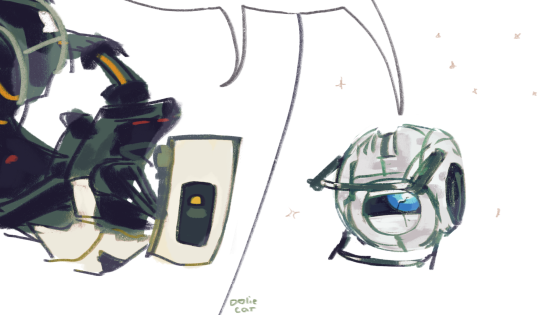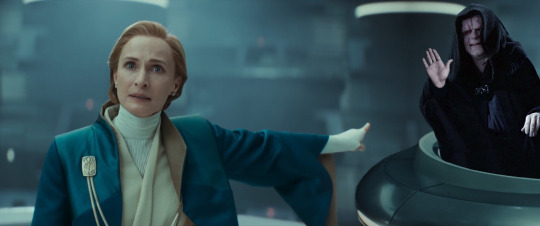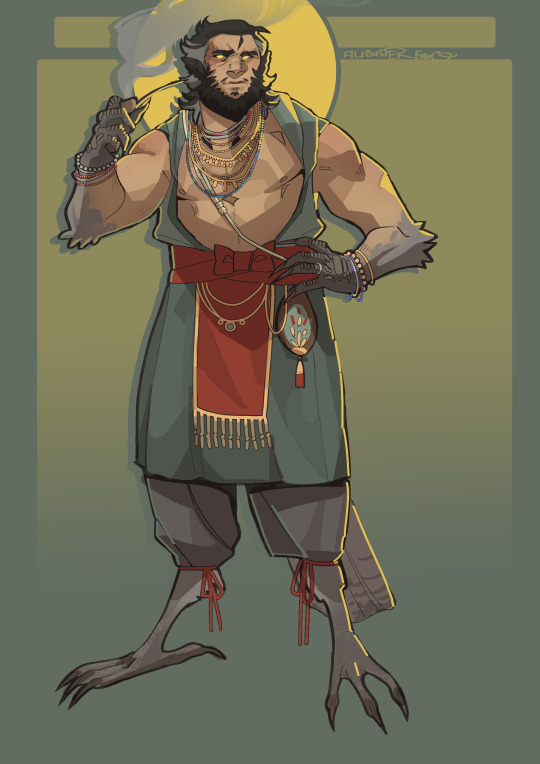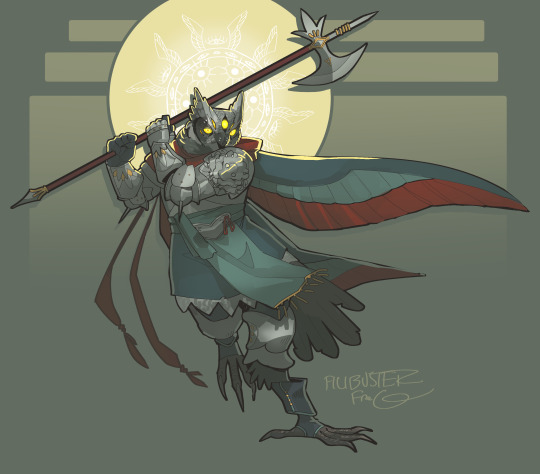Don't wanna be here? Send us removal request.
Text

explain your gender in 10 words or less without using boring words like “male”, “female”, “nonbinary”, “masculine”, “feminine” or “androgynous”.
go!
316K notes
·
View notes
Text
"Naboo isn't ready for us!" like Naboo has never seen 4 Coruscanti high society bitches hopped up on refined Spice recklessly driving an airspeeder their parents bought for the price of a small continent
3K notes
·
View notes
Text
Zipp’s Guide to Monster Conversion (3.5 /PF to 5th Edition D&D)
Note: an updated version of this guide with a fully stated Criosphinx can be found here for free.
I play a lot of 3.5 adventures, but I prefer the 5th edition rules. So this means I do a lot of conversions. After months of playing around with numbers, I have hit upon a system that I have tried enough and feel confident enough about to share.
When converting a monster/creature/bad-ass Blackguard with an Unholy Mace, remember there is no right and wrong conversion. If you make a Goblin who rolls 2d12 for damage, that’s not “against the rules” just because Goblins don’t normally do that. You can DO anything. The goal in conversion is to try and keep the intention of the original adventure, including its difficulty. So if you are converting a Goblin Beserker that is supposed to deal mighty damage with its massive spiked gauntlets worn on its over-muscled arms, then give it that 2d12 damage and don’t look back!
Above all, don’t get stuck trying to perfect your creation. Remember: even WOTC conversions, like those seen in the Yawning Portal, are only “official.” They are not perfect.
The perfect conversion is the one which works at your table and makes the moment you are trying to recreate a memorable one. Using these guidelines has helped me many times in achieving that. If it can help you do the same, then great!

Before Anything Else…
The first step is deciding, hey, is there an easier way to do this? By that I mean, does this monster or something “close enough for jazz” already exist in fifth edition?
For instance, if I have a sneaky backstabber character I need to convert, rather than try to simulate 3 levels of fighter and 2 of rogue, how about I just use the “Master Thief” NPC from Vollo’s Guide? I can easily change out the thief’s base stats for those listed in the original module and if there is some special ability that is key to the backstabber’s encounter, then I can add that in (maybe he uses a special poison that I need to recreate). With that, I have converted the character with a minimal of steps. Just make sure you take a second look at Hit Points. They can get a bit funky in the conversion, as you will see later on.
In the case of the Criosphinx, there is nothing equivalent in the MM. There are Sphinxes, but they are different enough (and far more powerful) that I feel I have to start from scratch on this one.
Challenge Rating
This is the first thing I look at. It tells you a lot about what your monster should look like, in terms of power (even if the end result doesn’t keep the same CR). A good rule of thumb is that whatever the 3.5 CR is, the 5th edition CR tends to be one lower. After figuring that out, I match the new CR to the CR in the DMG to figure out proficiency, which helps me build everything else, from attack bonus to skill bonuses.
The Criosphinx is listed as a CR 7 in the module. Looking at a CR 6 monster in the DMG tells me its proficiency should be +3. I also get a general sense of what a creature at that level has in terms of health, AC, damage, and attack bonus. CR 6 is my target, now!
Base Statistics
Charisma, Dexterity, Strength, etc… these can almost always stay exactly the same. The only red flag here is for exceptionally powerful stats, like a Strength of 23 or a Constitution of 25, because modifiers in DnD 5 are more conservative than in earlier editions. For instance, if Strength and Proficiency end up giving +9 to athletics, that is a HUGE boost for all grapple rolls and could potentially give your monster a party shattering ability to pin down the players or make a Strength based DC of one of their abilities far too hard to withstand. It is not WRONG to leave such stats this high, but make sure you review it for potential problems.
After reviewing the Criosphinx stats, I see that STR is listed as 23. As flavor, I like this, because the Criosphinx, based on a ram, should hit like a brick to the face, but for my party level I feel it is a little over powered, so I reduce it to 19. Still plenty of oomph with a +4 modifier, and since I want to use its “push” feature quite a bit to try and knock players off of platforms, it will make its strength bonus to athletics a little more reasonable than the +6 it would have gotten. This also will help reduce its attack bonus and thus its overall CR, helping me not overshoot my CR 6 target.
Skills and Saves, Resistances and Vulnerabilities
As a rule, D&D 5 monsters don’t tend to have skills and saves, whereas all D&D 3.5 monsters do. To decide whether your converted monster has these things, look at their stat block. If one of their skills or saves is really high, or one of their common attack abilities relies on doing something that involves skills (like grappling or shoving), they should gain proficiency in the relevant skill or save. Also, if they have certain feats that let them dodge or soak hits, consider giving them a save. Common flags for me are the feats evasion and toughness, which I consider giving Dex and Con saves for, respectively. There are so many feats in Pathfinder/3.5 that you may have to do some research on them to decide which ones deserve skills/saves.
The Criosphinx relies heavily on its Bull Rush attack and on tossing people around with its strength, so one skill I decide it really needs is Athletics (+7). It also is listed as having a pretty high listen skill (+11) so I decide it deserves proficiency in Perception (+3). Then, because the adventure wants it to be disguised as a statue when it first appears, I decide to give it Stealth (+3). That will also be fun in case it flies into the mist and hides, waiting for a surprise attack. Lastly, I give it a Con save because its Fort save in 3.5 is fairly high and I feel like it fits the monster.
Attacks and Damage
This is where you get to have the most fun. D&D5 monsters are boiled down to their purest elements. Rather than having a ton of feats which offer special attack options and full round attacks versus one action attacks, DND5 simplifies things. As a general rule, monster attacks can be broken down into the following categories (and in each category they will have only ONE option):
Weapon attack (sometimes one for ranged, one for melee, and rarely another for different kinds of damage like a bite attack for piercing)
Weapon attack with special effect, usually requiring a save roll (like pulling someone prone after the attack)
Special ability which usually does something other than damage, but has a detrimental effect on the victim, like a mummy using its gaze to cast fear (requires saving roll)
When converting, you are trying to come up with attacks that let the monster act as it was intended. So if a monster uses tentacles in 3rd edition with a special grappling feat, that grapple effect can either be added to its normal attack as a secondary “save against” option, or can be put in as a second action, like “tentacle grab.” Damage is determined by size or by natural weapons (which is pretty much up to DM discretion) plus the appropriate modifiers, and “to hit” is determined by modifiers and proficiency. Really, the only thing you are building from scratch is special effects and when doing so keep in mind that you don’t have to come up with an equivalent move for EVERYTHING. Pick what the key attacks or abilities are and use the above limitations to determine if you are going overboard. THE GOLDEN RULE: if the ability is just another option for the monster and not something it will use on a regular basis, it is better not to convert it.
If a monster would get multiple attacks on a full attack action, that is turned into multi-attack here, the number of attacks determined by their challenge rating. Look to the damage output in the DMG CR table, page 274, to determine how many attacks they should get and what you want your damage dice to be (you can also look at similar monsters to get a feel for what natural weapons should roll on damage dice).
Spells can be direct copied from third edition and you can either find the closest 5th edition equivalent for spells which don’t exist in this edition or you can get creative and convert them as you see fit. Legendary Abilities, Special Abilities, and Special Rules are all open to DM discretion and can mime passive abilties like uncanny dodge or auras. Note that many feats and abilities from 3rd edition don’t need to be converted as their mechanics aren’t really appropriate to 5th edition. This is especially true of improved critical, improved initiative, cleave, and combat reflexes. Things like power attack and bull rush can either be worked into the attack damage and effects if they are especially important to the monster or its attack strategies, or ignored.
Gore is one of the Criosphinx’s attacks, and it treats as an extension of a double claw attack. This sounds like multi-attack material to me, so I stat out a claw-claw combo that it can use every turn. In addition, I really want that “shove” feature of Bull Rush to be a part of this fight (and it is written as a key strategy of the Criosphinx in the module) so I give it an alternate attack option, Bull Rush, which does decent damage and can push the players around if they fail a Str Save (for the DC on this, I use the CR 6 standard DC of 15 as given in the DMG).
As for abilities, it is labeled as having flyby, so I give it that. I also give it inscrutable, because the other 5th edition sphinxes have that.
Armor Class
There is a formula for converting DCs from 3.5 to 5 that I like a lot, and it seems to be very accurate. It is: (3.5 DC - 10)/2 +10 = 5 DC (Round up). So if the 3.5 DC is 23, then you get 23 - 10 = 13/2 = 6.5 + 10 = 16.5 = 5th DC is 17.
Because Armor Class is basically a DC where you roll your attack skill, the same method works great for converting it (for AC under 11, just use the AC as written).
Note: this is only for natural armor. For characters who wear armor, usually humanoids, use the standard method of the armor’s AC plus any appropriate Dexterity bonuses.
The Criosphinx is listed with an AC of 20 in 3.5, so using the formula I end up with AC 15. Because this isn’t a monster which wears armor, I don’t add Dex to this, I consider it part of the overall calculation.
Hit Points
In general, monsters in 5E have 2 more hit dice levels then their counterpart in 3.5. But it is more complex than just adding a few hit points, because enemy hit dice in 3.5 are class based, whereas enemy hit dice in 5 are size based, so the conversion doesn’t happen smoothly. For instance, a Barbarian Hobgoblin in Pathfinder is going to roll d10′s or d12′s for each of its levels, because it is a Barbarian. But a Fifth Edition Barbarian Hobgoblin is going to roll d8′s, because they are medium sized. To get this to work right, you need to do a little math. Here are the steps…
Figure out your creature’s size. Medium monsters and creatures have 1d8 each level (this is the one you will use most often). Take this number and divide it by half, then add 0.5 to get your “average hit points per level” (AHP) For 1d8 it is 4.5.
Divide the 3.5 creature’s hit points by the AHP. Round up. This will give you the creature’s adjusted level.
Add two to this level. This is the creature’s Fifth Edition level. Don’t be concerned if it seems ridiculously high, like 18 or 22. Remember, this isn’t CR, it is just for determining health.
You can represent this level as the number of dice +/- their Constitution Modifier per level. So for a level 13 medium sized monster with a +3 CON, it would read 13d8+39 for an average HP of 98 (and a possible HP of 143).
Once you have that average hit point number and possible hit point amount, you can play around with numbers within that range to make the monster have a lower or higher final CR, see below.
A third edition Criosphinx has about 85 hitpoints and is a large creature. Using the formula above using D10 as my base gives me 18, so 18d10+54 (average of 153).
Wrapping it up…
The final step is figuring out what the 5th edition CR of your newly converted creature is. Use the guidelines on page 274 of the DMG, follow its instructions to get the average CR, and then compare it to the CR you intended back when you started. If it matches, then you are done. Congratulations! If it doesn’t match, then you might have some tweaking to do.
First, consider how far off the CR is. If the DMG CR is only a point below your intended CR, look at your monster. Does it cast spells or have legendary abilities or powerful resistances that the CR average doesn’t take into effect? For instance, a Mage’s hit points, AC, and damage output may list him as a CR 2 monster, but if he can cast spells like wall, haste, magic missile, and command and has a high wisdom/intelligence bonus to back those spells up, he may very well destroy a party who wipes the floor with hordes of CR 2 Orcs. Similarly, if your monster has spells and lots of special abilities, it may actually be a point or two tougher than the DMG is telling you. In this case, you can label it with your intended CR.
But, if the CR the DMG gave you is HIGHER than you intended, you probably want to look into making it a little less powerful (unless it has really bad vulnerabilities or other exploits). Similarly, if the DMG CR is more than a point lower than your intended CR, you probably need to make the monster stronger.
If you need to adjust the monster, you can easily do so by adjusting health or damage output. Raising one of the monster’s base stats could potentially add bonuses to its hit, damage, health, or AC. Just play around with the numbers using page 274 in the DMG to check your work until you get the desired CR out of the DMG.
You shouldn’t have to change much: I never have. But it does provide a nice check on your work, especially if you are making up your own attacks or damage dice for natural weapons.
18 notes
·
View notes
Text
I do the opposite of gatekeeping, I’m not going to shut up until you like this thing as much as I do
53K notes
·
View notes
Text




mr squarepants, in the flesh.






4K notes
·
View notes
Note
@vespersbelladonnakiss @forgissimus
can you draw chell in the electric chair please 🥰🥰🥰🥰

833 notes
·
View notes
Text

another one of my leviathans
68 notes
·
View notes
Text

Inkwelling
Enchanted inks are created by imbuing regular ink with magical gem dust, mana, energy, blood, or through various other means, and they are primarily used for
crafting magical scrolls, grimoires, as well as colored inks, and similar products like enchanted dyes utilized in magical items such as flying carpets, talking books, and self-writing paper.
This particular inkwell had absorbed ambient magic from its surroundings or perhaps suffered collateral damage from a stray spell cast by a wizard or sorcerer. Due to a peculiar twist of fate, it gained semi-sentience, allowing it a minimal understanding and knowledge of the world around it, as well as the ability to animate itself.
Most Inkwellings tend to exhibit a strong desire to paint, draw, and scribble all over, making them a considerable nuisance for local libraries, historians, archivists, and arcanists alike.
Nevertheless, having a trained or tame Inkwelling companion, albeit rare, is a great luxury for a writer. These companions have the ability to regenerate ink from ambient magic and can assist in writing or copying elaborate texts and designs




15 notes
·
View notes
Text
Toronto Night Market - Come Fistfight me (and buy some prints) irl
WELL I LET MY IMPULSE CONTROL GET THE BEST OF ME FOLKS
I just put vendor payment down for 5 night markets in may and june. The night markets'll be at 415 King St West in Toronto Ontario
I'll give yall details closer to the events but just know that this'll probably push my calligraphy stream schedule up so that I'm streaming Mondays, 3-6pm in May and June, since these are 5 weekend long sales/events and there aint no way I'll have enough energy to stream after hauling all my show gear home at 9pm.
So for may 2-4, may 16-18, may 3-june 1, june 13-15 and june 27-29 I'll be available live to write calligraphy for you or for you to come pick up prints without dealing with shipping costs n whatnot
900 notes
·
View notes
Text

yunno how games, programs, etc. can be considered either legacy content or not depending on how well they are supported with following patches/updates? I feel like revenge of the sith is one of the most patch-supported movies of all time
almost everything set before revenge of the sith or set after during the imperial era is in itself trying to support what is depicted in revenge of the sith in regards to the force, the jedi, anakin, the emperor, and the politics of the senate. With the only exceptions being stuff to deal with bounty hunters or the criminal underworld or etc.
you either get "release version revenge of the sith" which is a strangely-paced but generally fulfilling movie that has to make up for all the stolen time of its prequels
or you finally get "revenge of the sith: gold edition" when you consume a mountain of tv shows, comics, and books that lie around it or have someone next to you to describe what's been going on in and around the scenes behind it
1 note
·
View note
Text
46K notes
·
View notes








